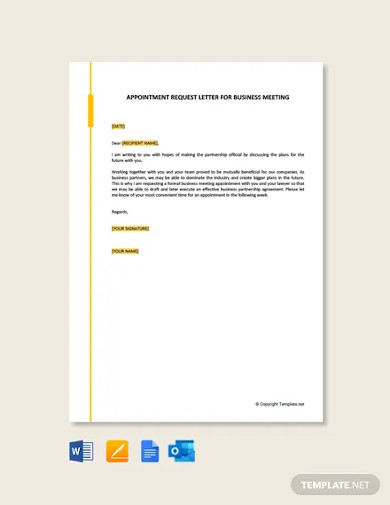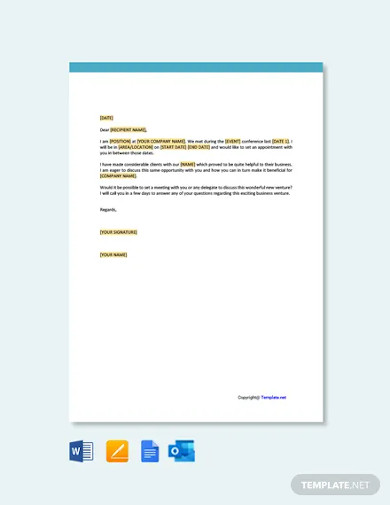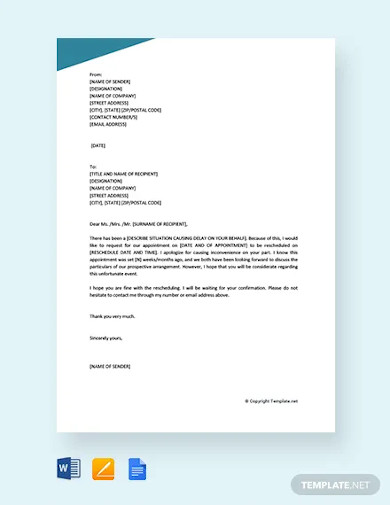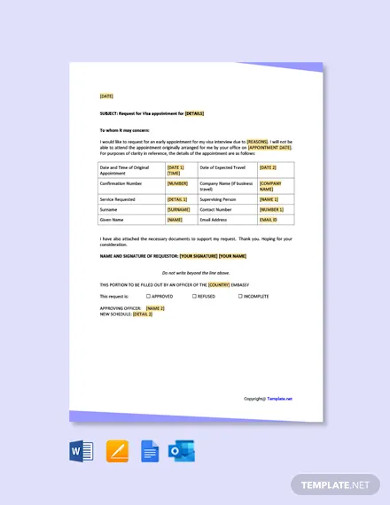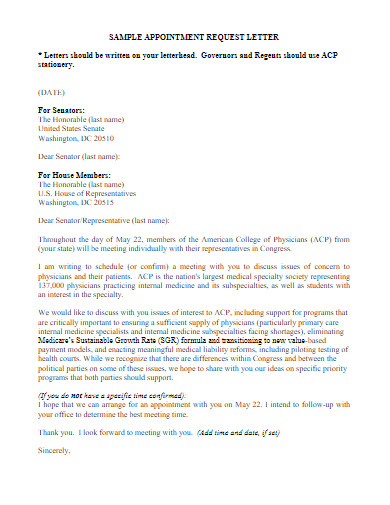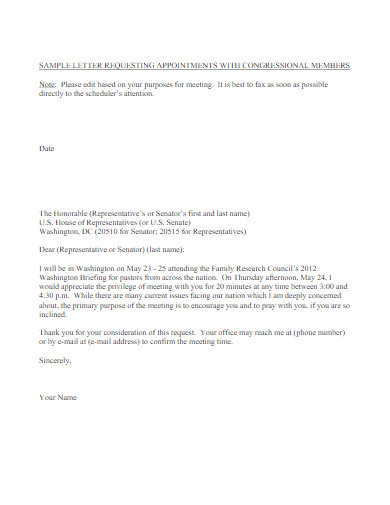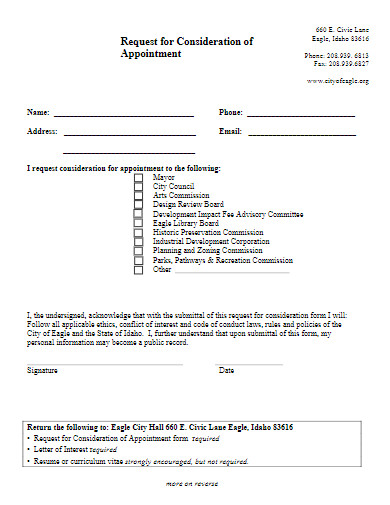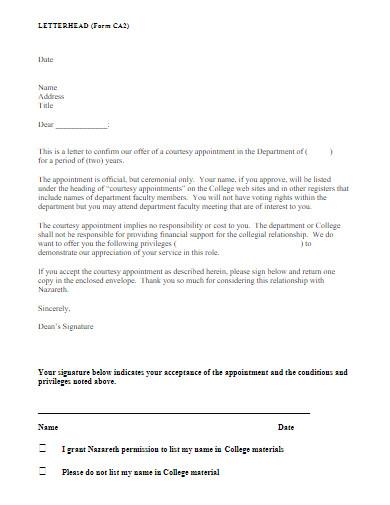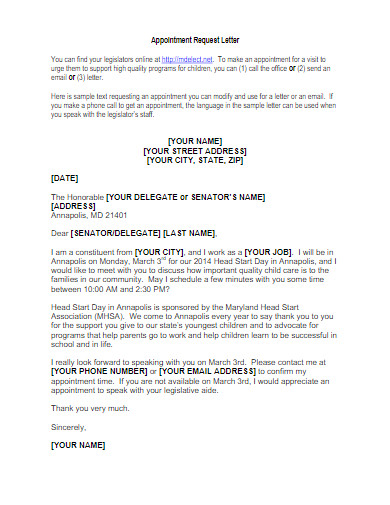Setting up appointments are often made through emails or calls. But making letters to set up a request or an appointment is also useful. Especially when you want it to be more personal. Sending a request letter for a meeting may be tricky if you have no idea what to place. But not to worry, this article will tell you what to place on an appointment request letter and what to avoid altogether.
[bb_toc content=”][/bb_toc]
10+ Appointment Request Letter Examples
1. Free Appointment Request Letter for Business Meeting
2. Free Appointment Request Letter Template
3. Free Reschedule Appointment Request Letter
4. Free Visa Appointment Request Letter
5. Sample Appointment Request Letter
6. Letter for Requesting Appointment
7. Request for Consideration of Appointment Letter
8. Letter of Appointment Request for Building Permit
9. Basic Appointment Request Letter
10. Request for Appointment Letter
11. Appointment Request Letter in PDF
Definition of Appointment
An appointment is a formal engagement. A chance to meet someone or to visit an individual at a certain time and place. It is the act of giving someone a job position or a job. This is the act of assigning someone for a particular time. May it be for work or personal matters.
Definition of Request
A request means to express a desire for something. To ask for something politely. This means to ask for something or to petition for something officially or politely. A formal message to ask for something or to ask for someone.
Definition of Appointment Request
An appointment request letter is a formal letter people tend to write. An appointment request letter is something you write to ask a person or a group of people to meet. You write an appointment request letter if you wish to make an appointment with the doctor or through a meeting or even a business meeting. This formal letter is used to arrange meetings.
Importance of Appointment Request Letters
The importance of an appointment request letter is to meet up with people. Whether it may be for personal reasons. It can also be used to meet with clients to discuss issues for business and meetings. The details of the letter shows the importance of the meeting, the date and the venue for business meetings.
Tips for Making Appointment Request Letters
- Complete the necessary information – The name of your recipient should be in full. Avoid abbreviations. This is especially true with the address. Request letters are formal. Keep it formal.
- State the purpose of the appointment – Do not beat around the bush. State the purpose as to why you are writing your letter. Avoid making your letter too short that you miss out on putting the purpose of your letter.
- Follow the format of a business letter – The date, the name of the recipient, address and contact details are all placed on the left side of the paper. Do not forget to sign your name. Do not make your letter too long that the details are missing.
- Keep it professional at all times – Do not make your letter sound rude, arrogant, or timid. Keep everything at a professional level at all times.
- Revise your letter before sending – Check everything. Just in case you have forgotten something. Check your spelling, your grammar, and the punctuation marks. Read your letter out loud and see if it is professional in tone and message. If it is not, revise it.
FAQs
Why are appointment request letters needed?
When you want to make an appointment or set up a request, letters are the first thing you would think of. The reason for this is because it sounds more formal compared to making an appointment verbally. Also, appointment letters are often used for when people are too busy to go and make one.
Do I need to state the real purpose of my writing?
Yes. Avoid beating around the bush.
Is a doctor’s appointment considered to write an appointment letter?
Yes. You write an appointment letter to your doctor if you are too busy.
Appointment request letters are used as the name suggests. To make requests for setting up meetings, or to make appointments with anything medical. Without the use of these letters, everything would be in disarray. Using these types of letters should only be to make an appointment. Regardless if it’s personal or professional.




